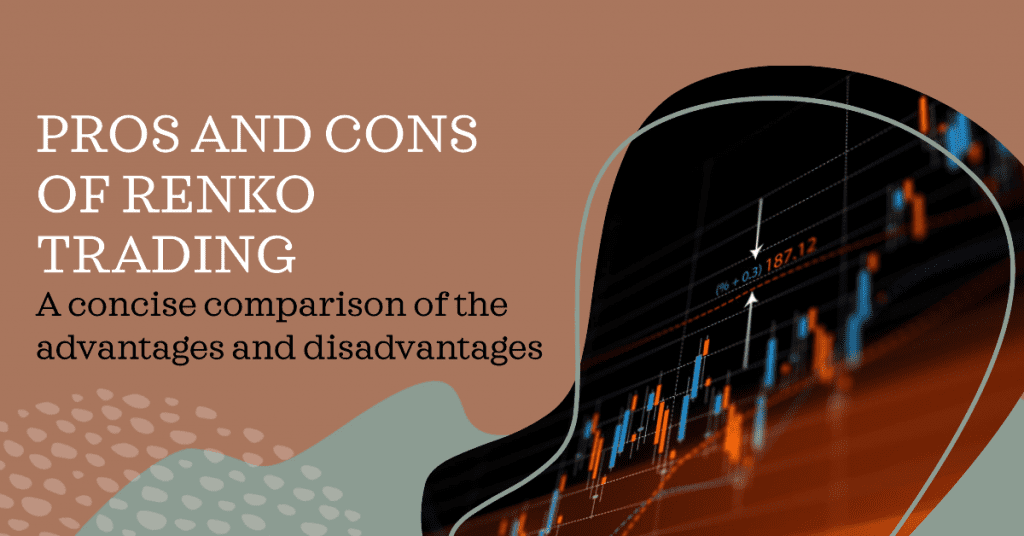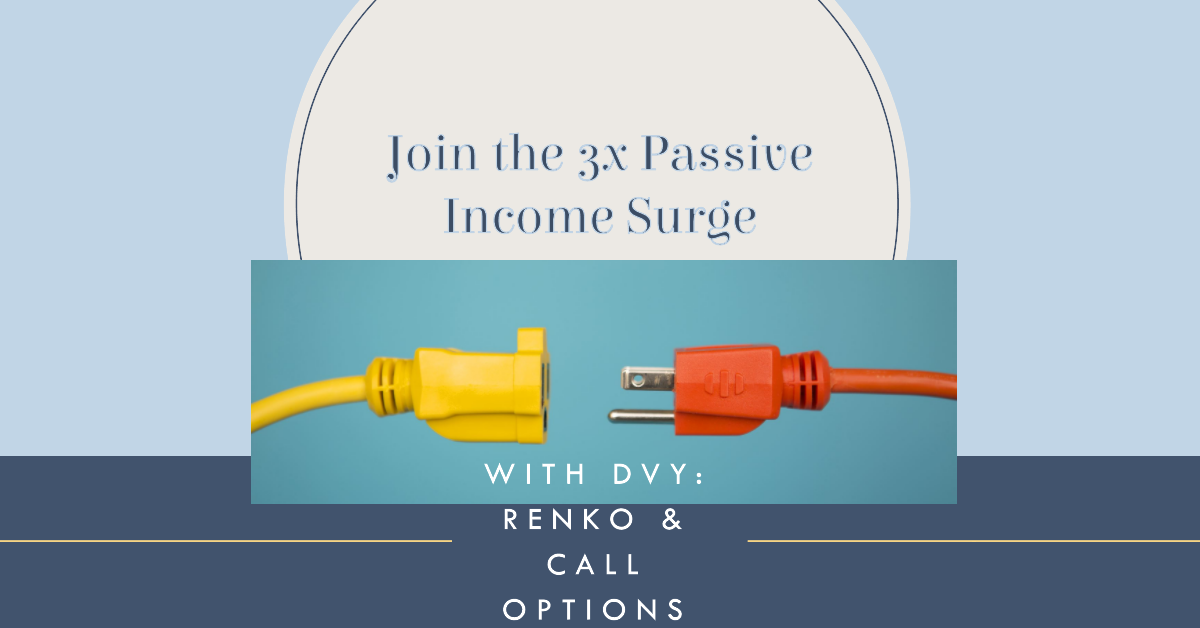Table of Contents
Renko trading is a powerful technique that allows traders to identify and exploit trends in the financial markets with great precision. By using a specific charting method, Renko charts, traders can filter out market noise and focus solely on price movements that matter. In this article, we will delve into the intricacies of Renko trading and explore how you can effectively identify and capitalize on trends. Let’s get started!

Identifying Trends with Renko Charts
One of the key advantages of Renko charts is their ability to help traders identify trends with high precision. By using Renko bricks, which are plotted based on a predetermined price movement, traders can filter out minor price fluctuations and focus solely on significant price movements.
To identify an uptrend, you need to look for a series of consecutive bullish (upward) bricks. Each brick’s size represents the price movement required to form a new brick. When you see a consistent pattern of bullish bricks, it indicates a strong upward trend. Conversely, a series of consecutive bearish (downward) bricks signifies a downtrend.
Exploiting Trends with Precision
Once you have identified a trend using Renko charts, the next step is to capitalize on it with precision. There are a few strategies you can employ:
1. Trend Following:
One popular approach is to follow the trend until it shows signs of reversing. By entering trades in the direction of the trend, you increase your chances of success. However, it is important to set appropriate stop-loss levels to manage your risk.
2. Trend Reversal:
Renko charts can also assist in identifying potential trend reversals. Look for a change in the brick color or a significant price movement against the existing trend. This could indicate a potential trend reversal, offering you an opportunity to enter a trade in the opposite direction.
3. Support and Resistance Levels:
Combine Renko charts with support and resistance levels to further refine your entries and exits. When the price reaches a significant support or resistance level, consider taking profits or adjusting your position accordingly.
Renko Trading Strategies: Tips and Techniques for Successful Traders
Renko trading strategies can be a valuable tool for traders looking to enhance their success in the financial markets. This section will provide you with useful tips and techniques to optimize your Renko trading approach. By implementing these strategies, you can improve your decision-making process, increase profitability, and achieve your trading goals.
The Perplexity of Renko Trading
Renko trading can be perplexing for beginners, but with the right strategies, it becomes more accessible. One technique is to start with larger brick sizes to capture significant price movements. As you gain confidence and experience, you can gradually decrease the brick size to capture smaller price fluctuations.

Tips for Successful Renko Trading
1. Choose the Right Brick Size
The brick size you select is crucial to your success. A larger brick size can help you identify long-term trends, while a smaller brick size allows you to identify short-term price reversals. Experiment with different brick sizes and find the one that aligns with your trading style and goals.
2. Combine Renko with Other Indicators
Although Renko charts provide valuable insights, it’s often beneficial to combine them with other technical indicators. Popular indicators such as moving averages, trend lines, and oscillators can help confirm Renko chart patterns and increase the accuracy of your trading decisions.
3. Set Realistic Profit Targets
Renko charts can offer highly accurate entry and exit signals. However, it’s essential to set realistic profit targets based on historical price movements. Avoid the temptation of chasing unrealistic gains and instead focus on consistent profitability over time.
4. Implement Proper Risk Management
As with any trading strategy, risk management is crucial. Define your risk tolerance and set appropriate stop-loss levels to protect your capital. Renko charts can help you identify optimal stop-loss levels by observing price reversals and support/resistance levels.
Burstiness in Renko Trading
Renko charts are known for their burstiness, which refers to sudden and significant price movements. To take advantage of these bursts, consider using trailing stops to secure profits during strong trends. This way, you can capture more substantial gains while still protecting your capital.
Incorporating Context and Specificity
By combining the burstiness of Renko charts with the perplexity of trading strategies, you can achieve a high level of specificity and context. This means analyzing price patterns, considering market conditions, and understanding the broader economic landscape. Successful Renko trading requires a well-rounded approach that incorporates both technical and fundamental analysis.

Renko Trading: Pros and Cons Every Trader Should Consider
Renko trading is a unique approach to analyzing and trading the financial markets. Unlike traditional methods that rely on time-based charts, Renko charts are purely based on price movements. By focusing solely on price action, Renko trading offers both advantages and disadvantages that every trader should be aware of. In this article, we will explore the pros and cons of Renko trading to help you make an informed decision.
Advantages of Renko Trading
1. Clear and Easy-to-Understand Charts
Renko charts provide traders with a clear visual representation of price movements, free from noise and distractions. These charts use bricks or blocks to represent price changes, making it easier to identify trends, support and resistance levels, and chart patterns. The simplicity of Renko charts allows traders to focus on the most important aspect of trading: price action.
2. Removes Market Noise
Renko charts filter out the noise generated by small price fluctuations, presenting a cleaner picture of the market. By eliminating the constant ups and downs, traders can better identify significant price movements and trends. This can help traders avoid false signals and make more accurate trading decisions.
3. Helps Identify Trends
Renko charts excel at identifying trends. As these charts only plot new bricks when a significant price movement occurs, traders can easily spot the direction of the trend. Whether it’s an uptrend, downtrend, or a sideways market, Renko charts provide a clear and unambiguous view of the prevailing trend.
4. Effective for Swing Trading
Renko charts are particularly suitable for swing traders who aim to capture medium-term price movements. By focusing on significant price changes, Renko charts can help traders identify potential swing trading opportunities with a higher degree of accuracy.
Disadvantages of Renko Trading
1. Less Precision with Entry and Exit Points
While Renko charts excel at identifying trends, they may provide less precision when it comes to pinpointing entry and exit points. Since Renko charts do not consider time, traders may miss out on certain price patterns or indicators that are time-dependent. This can result in missed trading opportunities or premature exits from trades.
2. Limited Time-Based Analysis
Renko charts are purely focused on price action, disregarding time-based analysis. This can be a disadvantage for traders who heavily rely on time-based indicators or strategies. By ignoring time, Renko charts may not fully capture certain market dynamics that occur within specific time periods.
3. Difficulty in Scalping
Renko charts may not be the best choice for traders who prefer scalping or short-term trading strategies. As Renko charts require a significant price movement to form a new brick, they may miss out on smaller price fluctuations that are essential for scalpers. Traders who aim to capture quick profits within a short time frame may find Renko charts less suitable.
Renko trading offers several advantages, including clear chart visuals, noise reduction, trend identification, and suitability for swing trading. However, it also comes with limitations, such as potential challenges in pinpointing precise entry and exit points, limited time-based analysis, and difficulties in scalping. As with any trading approach, it’s crucial to understand the pros and cons before incorporating Renko charts into your trading strategy. Consider your trading style, goals, and preferences to determine whether Renko trading aligns with your overall trading approach.
Conclusion
Renko trading strategies offer a unique perspective on price movements and can be a valuable tool for traders. By understanding the basics of Renko charts, implementing effective tips and techniques, and managing risk appropriately, you can enhance your trading success. Embrace the perplexity and burstiness of Renko trading and develop a disciplined approach to achieve your financial goals.
Renko trading provides traders with a powerful tool to identify and exploit trends with precision. By using Renko charts, traders can filter out market noise and focus solely on significant price movements. Understanding how to identify trends and employing suitable strategies can greatly enhance your trading results. Start incorporating Renko charts into your trading arsenal and unlock the potential for more profitable trades.



